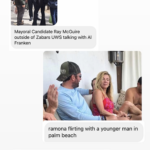“The Pandeuxmoi”*: Preserving Celebrity Culture in the era of COVID-19 Pandemic

*The term “pandeuxmoi” was coined by the culture writer, Hunter Harris.
Introduction
The onset of the COVID-19 pandemic in North America posed a challenge for Hollywood’s elite. The worldwide lockdown that began in March of 2020 demanded a retreat from public life and for celebrities, whose careers depend on living publicly, the pandemic was a real threat. Not because it was a deadly pandemic that had already killed thousands of people, but because it threatened their livelihood. In its early stages, the COVID-19 pandemic had already demonstrated immense power and had already transformed the way we lived; what would it do to celebrity culture? Anti-celebrity sentiment appeared early in the pandemic after the actress Gal Gadot released a video of herself and other well-known celebrities singing John Lennon’s “Imagine.” The video was Gadot’s attempt to encourage solidarity at a divisive and isolating time; it came off as out of touch. Excoriated across social media, the video seemed to reveal the fallibility of celebrity and, more so, the unimportance of it. For many online, the pandemic had put things in perspective: if everyday life could be so easily destabilized by a deadly virus, who cared where the Kardashians were taking a vacation? Perhaps this was the moment celebrity culture would be dismantled once and for all. A year into the pandemic, this assumption has proven to be largely false. In fact, the pandemic seems to have given the celebrity economy a boost, with new celebrities emerging at what feels like an alarming rate. In the following essay, I study Deux Moi’s (@deuxmoi) “Spotted” segment, a weekly segment that publishes a curated selection of celebrity sightings sent in by fans (see Appendix). An Instagram-based celebrity gossip platform, @deuxmoi has become a staple of pandemic culture. Its appeal lies in its unique approach to celebrity gossip—instead of scandal, most of the gossip focuses on the ordinary and everyday behaviors of Hollywood’s elite. In one instance, after the account’s moderator expressed that she and Jennifer Aniston shared the same coffee order, messages about the coffee orders of other celebrities flooded in. Other times, the messages have an air of social justice. After another anonymous Instagram account, House of Effie, began posting allegations of sexual assault against the American actor, Armie Hammer, the discussion of the situation on Deux Moi brought forward more stories about the actor’s insidious relationship history.
My Argument
In my essay, I interrogate this claim through an analysis of the “Spotted” segment. Through my discussion of how images of celebrities’ private lives are part of a larger practice of Hollywood publicity, I show celebrity’s dependence on visual culture. In doing so, I examine how candid imagery has been used by celebrity media to authenticate celebrity. Using the concept of “sousveillance” as a framework, I examine how the candidness of the segment’s photography may function as a subversive act. I then turn to a brief analysis of the visual elements of the “Spotted” segment, examining aspects including distribution practices and spectatorship. I argue that despite the subversive potential of the “Spotted” segment, ultimately it is another apparatus of the celebrity-industrial complex and functions to sustain the celebrity system.
Celebrity, Visual Culture, and Publicity
Celebrity culture has always been a visual culture. The concept of celebrity as it is now understood emerged from the Hollywood studio system: in the 1910s, studios started releasing information about popular actors in response to audience demand. Before then, most film actors were known only by the characters they played. As audiences began to recognize the same actors in different pictures, they began to take an interest in the personalities and private lives of their favorite actors. Studios took advantage of the audience’s desire and began to share “extra-textual information” about their stars (Petersen 49). In “The Rules of the Game: A Century of Hollywood Publicity,” Anne Helen Petersen traces the evolution of Hollywood publicity from the initially symbiotic relationship between the studio system and fan magazines, to the age of social in which celebrities control their images through various social media accounts. For fans, Petersen notes, information about the personalities and private lives of their favorite actors “became a new site of ‘authenticity’” (49). The demand for extra-textual information paved the way for fan magazines which, in tandem with the studios, published stories and images from behind the scenes of the films of the day. And so, celebrity was born. Photographs quickly became an essential part of shaping the extra-textual narratives of actors. Even as the celebrity media evolved throughout the 20th century and fan magazines faded into obscurity, photographs remained a constant in shaping audiences’ perceptions of celebrities. As Charles Kurzman et al. note in “Celebrity Status,” “visual images ‘made fame instant and ubiquitous in ways that the printed word could not match’” (Kurzman et al. 352). Yet, the mutation of celebrity in the last century so have the modes of visual images used to maintain it.
Celebs in the Wild!: Candid Images and the Rise of the Ordinary Celebrity
The evolution of celebrity media also saw an evolution in the quality images. For much of its history, staged hi-resolution images have been largely favored by celebrities and their teams in order to maintain the glamorous image of the so-called “high life.” However, as celebrity began to take “demotic turn” in the late twentieth century, these staged glamour shots became less appealing (Gamson 1062). Instead, candid photography of celebrities’ private lives began to trump traditional magazine images in the fight for fans’ attention. Joshua Gamson documents the rise of ordinary celebrity in “The Unwatched Life is Not Worth Living: The Elevation of the Ordinary in Celebrity Culture.” Gamson tracks the rise of phenomena like reality television stars and online microcelebrities to demonstrate how the demand for authenticity from celebrities began to turn ordinary, and largely unexceptional, people into celebrities. What distinguished these new “ordinary” celebrities from traditional Hollywood celebrities was that, unlike actors or musicians, these celebrities were famous not for their talents but for performing themselves. The rise of microcelebrities ushered in a new era of celebrity in which candid photography, largely produced by the paparazzi, played a crucial part. Petersen notes that, as extra-textual information had in the early twentieth century, candid photographs of celebrities worked to authenticate celebrities in ways that traditional celebrity media could not. She attributes the success of the tabloid Us Weekly to editor-in-chief Bonnie Fuller’s commitment to “humanizing” celebrities by capturing them completing everyday tasks. Petersen claims: “[Fuller] humanized [celebrities] in a way that made it easy to invest in their personal lives and problems…A picture of a star pumping gas spoke volumes about that star’s relatability, accessibility, and ‘realness’” (57). As a result, paparazzi images became the central mode of publicity within the celebrity system. Although paparazzi are mostly unwelcomed by the majority stars, the images they produce have been largely responsible for starting and maintaining the careers of the most famous celebrities. Stars and their publicists have taken advantage of the assumed authenticity of paparazzi images to consolidate their status. In this way, today’s celebrities have gained a semblance of control over candid paparazzi images in the same way that stars took control of celebrity media in the 1930s and 40s. The question that Deux Moi’s “Spotted” segment raises, then, is: if candid photography in the hands of fans—ordinary citizens and core actors of the celebrity industrial complex—will soon suffer the same treatment as its predecessors? Or does it present a unique opportunity to dismantle the celebrity system once and for all?
Negotiating Power Through Images
The centrality of visual culture in constructing and maintaining celebrity suggests that subverting the visual modes of celebrity media may significantly challenge the celebrity system. As a form of candid photography produced by ordinary citizens and shared through informal networks—Deux Moi is not an official publication nor are the submissions take by professional photographers—it is valuable to think about the “Spotted” segment as a form of “sousveillance.” First practiced by the Canadian professor, Steve Mann, sousveillance refers to “the monitoring of authorities…by informal networks of regular people” (Hoffman). A response to increased surveillance in modern society, the practice of sousveillance allows citizens to challenge state apparatuses. In a blog post on sousveillance, writer Jana Light documents how people in Germany and India have employed sousveillance in order to dismantle corrupt systems. Not only does the practice of sousveillance in these countries “shed some light on certain issues,” Light claims, but it also “offers a way for citizens… [to call] for more transparent governance and legal processes (Light). While celebrities may not be public officials like politicians and police officers, they are still power actors. As Olivier Driessens argues in “Celebrity capital: redefining celebrity using field theory,” “celebrity has become a valued power resource” (Driessens 544). Furthermore, the difference of celebrity status and capital from traditional forms of power has made celebrity power harder to check. For Driessens, what makes celebrity capital so different from symbolic capital is its “cross-field effects” (553). Driessens is concerned with what he sees to be the convertibility of celebrity capital: celebrity capital can easily be converted into other forms of capital, including economic and political capital. As such, more than any other power actor, celebrities are able to easily consolidate power. Driessens is largely interested in the impact on other social relationships, especially in the realm of politics. The last decade has normalized the celebrity politician, either in the form of celebrities who take public office (as in the case of Arnold Schwarzenegger) or politicians who become celebrities (as in the case of Congresswoman Alexandria Ocasio Cortez). The phenomenon of the celebrity politician is visible on Deux Moi: followers send in images of political candidates and the children of politicians (see figs. 2 and 3), thereby treating them with the same celebrity brush as Hollywood actors and musicians. In this way, these images demonstrate the sociopolitical impact of celebrity media like Deux Moi.
Spotted! The Deux Moi to Famehood Pipeline
Like the rest of the submissions on Deux Moi, the “Spotted” segment is a curation of celebrity sightings sent in by fans. There are no criteria for what is sent in: people can send a message or photograph, or a combination of both. The account’s moderator then organizes them into cohesive slides which she shares to the account’s Story. Because the submissions are anonymous, there is no way of telling if the textual submissions and the images were sent in by the same person. In some instances, Deux Moi’s moderator has made it obvious that followers’ textual submissions are matched with other followers’ visual submissions to create a full story. While this may simply be a way to corroborate information, it also demonstrates the editorializing that goes on behind the scenes. Through her editorializing, Deux Moi’s moderator acts contributes to maintaining the narrative of celebrities as untouchable. Notably, most of the images that submitted to Deux Moi are usually taken from a distance and typically capture the back of the featured celebrity. In many images, the face of the celebrity is not visible at all. In this way, the photographer’s position and, by extension, the spectator’s position reify the celebrity’s power and status. Kurzman et al. claim that “the privileges [fans] grant [celebrities] in person help to reinforce their superior status” (356). By creating a sense of elusiveness around celebrities, these images further contribute to building celebrity rather than interrogating its effects. Deux Moi’s mode of distribution does the same.
Because Deux Moi is hosted on Instagram, by nature the images are shared multiple times over as they are viewed by hundreds of thousands of followers—at the time of writing, the Deux Moi account has 833,000 followers, many of whom share the account’s posts with their non-follower friends. As these images pass through various networks, they pick up information that functions to build the mythos of the featured celebrities. For example, in the case of the American actor Nicholas Braun, his increased appearance in the “Spotted” segment (see figs. 4-6) has created a narrative around him as “a good boy,” as one fan message refers to him (see fig. 6). Petersen claims that, in Hollywood’s early days, the extra-textual information distributed by studios typically suggested that the real-life actor was just like the onscreen persona. She says: “If an actor always played a dashing hero, then stories would confirm that he was, in fact, a dashing hero in real life” (Petersen 49). In the case of Braun, the Deux Moi’s followers often refer to him as “Cousin Greg,” the character he plays in HBO’s Succession. The conflation of the real-life actor with his onscreen persona obscures the actor’s true identity. Whether Braun is as awkward and good-hearted as his onscreen personality is irrelevant. In his case, this conflation has had few repercussions because he has not been revealed to actually be a terrible person. But in cases where celebrities are accused of problematic and dangerous behavior, it can undermine the seriousness of their actions. In some situations, celebrities can depend—and have depended—on their fan’s positive misrepresentations to avoid being held accountable for serious misconduct.
Conclusion: Why It Matters
As Deux Moi has become more popular, celebrities have come to embrace it. Their embrace of Deux Moi demonstrates what has always been the case: the celebrity system will always evolve to adopt to the visual cultures that sustains it. Although there are several aspects of Deux Moi that undermine traditional celebrity media, the account largely functions to uphold the celebrity industrial complex. The implications of this cannot be fully addressed in this paper but I have tried to outline the most pertinent. As a status system, celebrity defies the trajectory of other status systems in that it shows no signs of decline. Furthermore, the convertibility of celebrity capital allows celebrities to maintain their power by consolidating it with other forms of power. However, the demand to make celebrity ordinary obscures the nature of celebrity power. The perceived ordinariness of celebrities allows them to wield power with, most of the time, little to no accountability. As traditional structures of power, including Western democracy, face a reckoning of unprecedented proportions, it may also be necessary to turn our attention to that elusive power structure that is celebrity.
Works Cited
Adasi, Akosua. Screenshots of @deuxmoi Instagram story. Spring 2021.
Driessens, Olivier. “Celebrity capital: redefining celebrity using field theory.” Theory and Society, vol. 42, no. 5, 2013, pp. 543-60. JSTOR, http://www.jstor.org/stable/24717521.
Gamson, Joshua. “The Unwatched Life is Not Worth Living: The Elevation of the Ordinary in Celebrity Culture.” PMLA, vol. 126, no. 4, 2011, pp. 1061-69. JSTOR, http://www.jstor.org/stable/41414175.
Gillespie, Katherine. “The Celebrity Tea Account Distracting Us From the Pandemic.” PAPER, Aug. 2020, https://www.papermag.com/deuxmoi-instagram-interview-celebrity-dms-2646870701.html.
Hoffman, Jascha. “Sousveillance.” New York Times Magazine, Dec. 2006, https://www.nytimes.com/2006/12/10/magazine/10section3b.t-3.html.
Kurzman, Charles, et al. “Celebrity Status*.” Sociological Theory, vol. 25, no. 4, 2007, 347-67. Wiley Online Library, https://doi.org/10.1111/j.1467-9558.2007.00313.x.
Light, Jana. “Sousveillance.” RESET.org, RESET, https://en.reset.org/knowledge/sourveillance-11152016. Accessed 28 Mar. 2021.
Petersen, Anne Helen. “The Rules of the Game: A Century of Hollywood Publicity.” The Virginia Quarterly Review, vol. 89, no. 1, 2013, pp.46-59. JSTOR, http://www.jstor.org/stable/26446642.
Images in this online exhibit are either in the public domain or being used under fair dealing for the purpose of research and are provided solely for the purposes of research, private study, or education.





